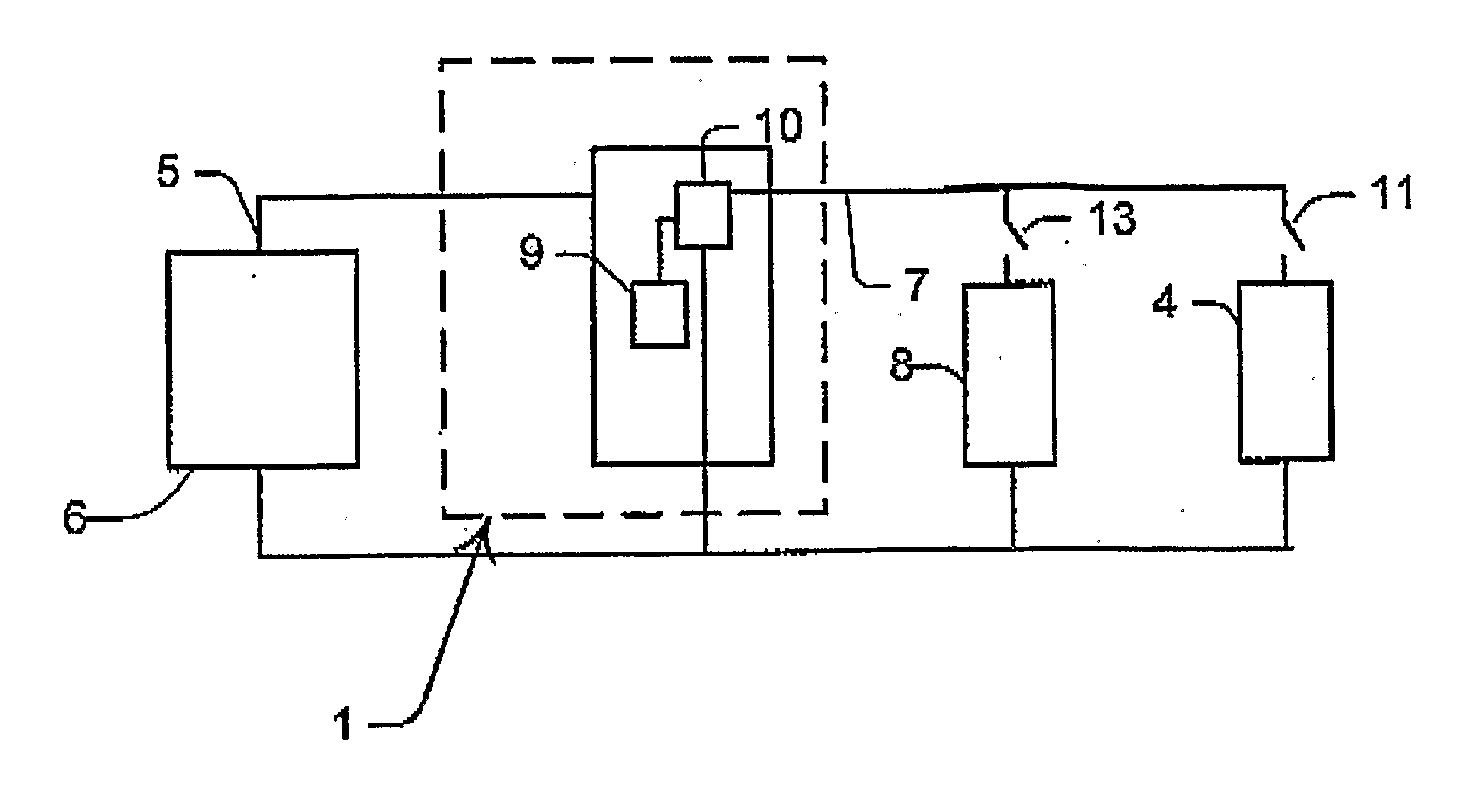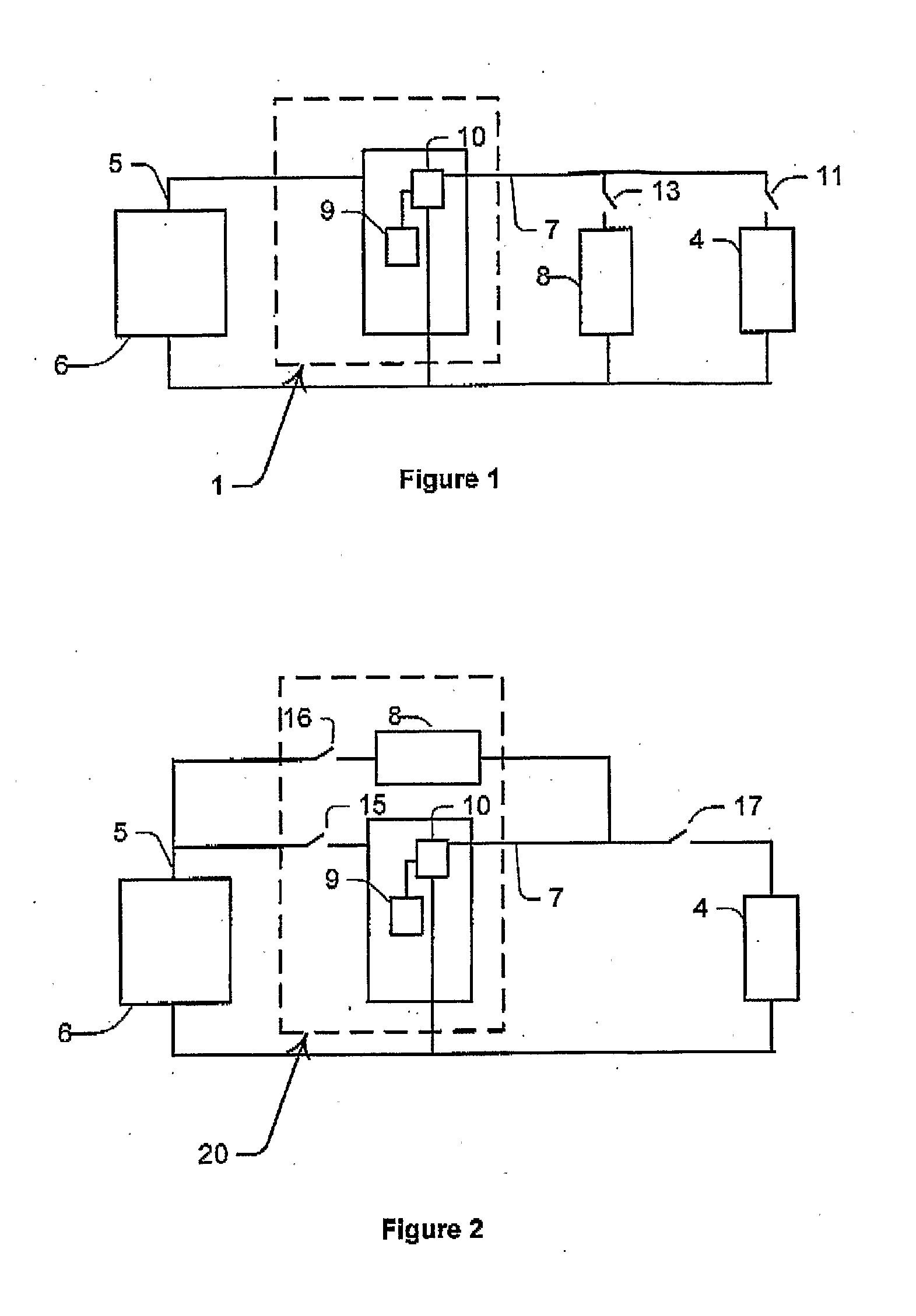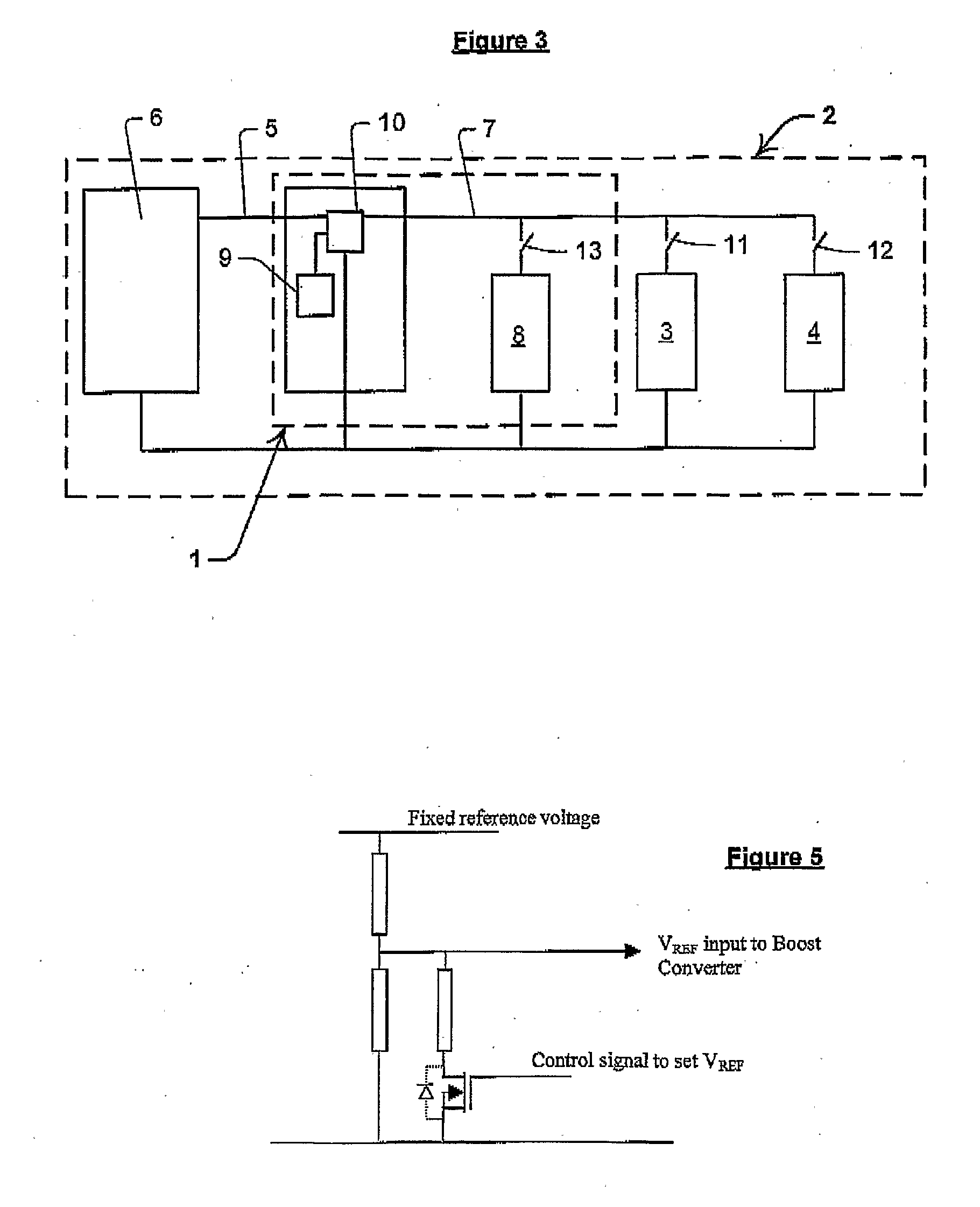Power Supply
a power supply and power supply technology, applied in the field of power supply, can solve the problems of increasing the size of the device and the cost, increasing the cost of the parts required to construct the device, and the high current peak, so as to reduce the risk of damage, the effect of increasing the runtime of the devi
- Summary
- Abstract
- Description
- Claims
- Application Information
AI Technical Summary
Benefits of technology
Problems solved by technology
Method used
Image
Examples
Embodiment Construction
[0185]Referring to FIGS. 1 and 2, there are provided respective power supplies 1 and 20 each for powering a load, the load being in the form of a flash driver circuit 4 for a digital camera (not shown). Each power supply includes a supercapacitive device, in the form of a supercapacitor 8, for powering circuit 4. A regulator unit, in the form of an inductive regulator 10, charges supercapacitor 8.
[0186]Each power supply includes an input 5 for connecting to a power source in the form of a lithium ion battery 6. In other embodiments alternate power sources are used, including—but not limited to—alternate battery types.
[0187]In the embodiment of FIG. 1, regulator 10 is in series with battery 6, and together these are in parallel with the supercapacitor 8, whereas in the embodiment of FIG. 2, supercapacitor 8 is in series with battery 6.
[0188]The regulator unit limits the charging current of the supercapacitor to a predetermined value. In the FIG. 2 embodiment the predetermined value i...
PUM
 Login to View More
Login to View More Abstract
Description
Claims
Application Information
 Login to View More
Login to View More - R&D
- Intellectual Property
- Life Sciences
- Materials
- Tech Scout
- Unparalleled Data Quality
- Higher Quality Content
- 60% Fewer Hallucinations
Browse by: Latest US Patents, China's latest patents, Technical Efficacy Thesaurus, Application Domain, Technology Topic, Popular Technical Reports.
© 2025 PatSnap. All rights reserved.Legal|Privacy policy|Modern Slavery Act Transparency Statement|Sitemap|About US| Contact US: help@patsnap.com



